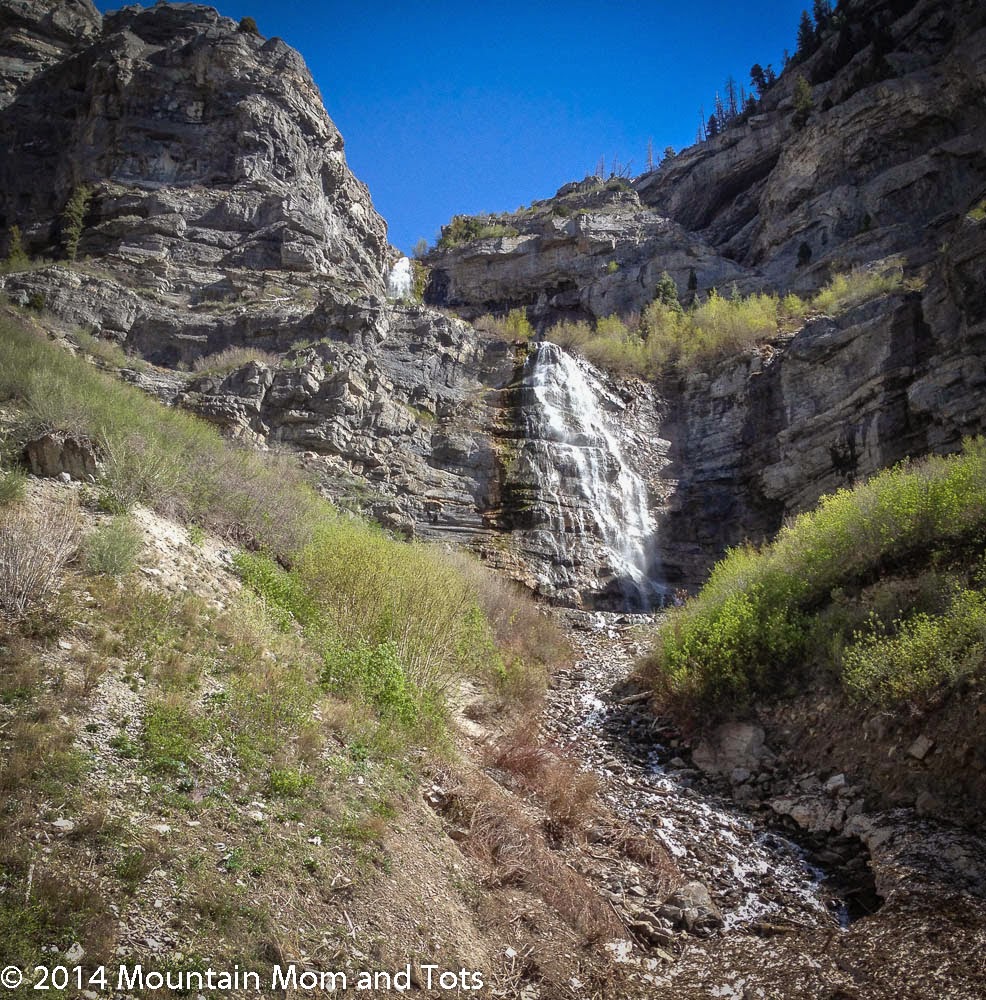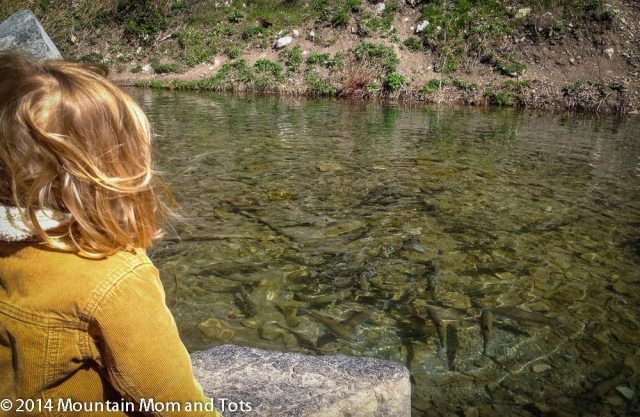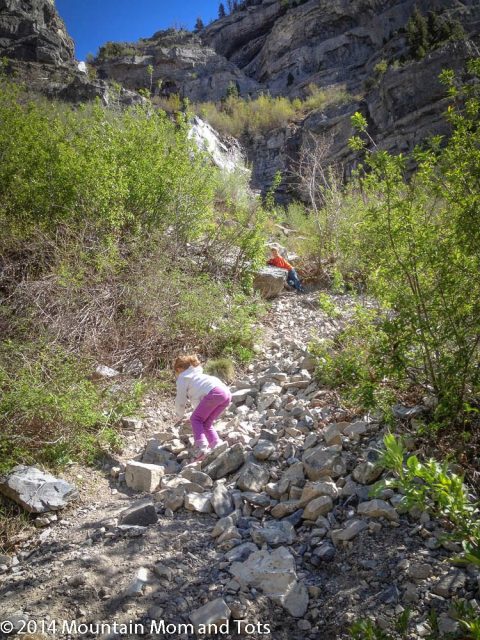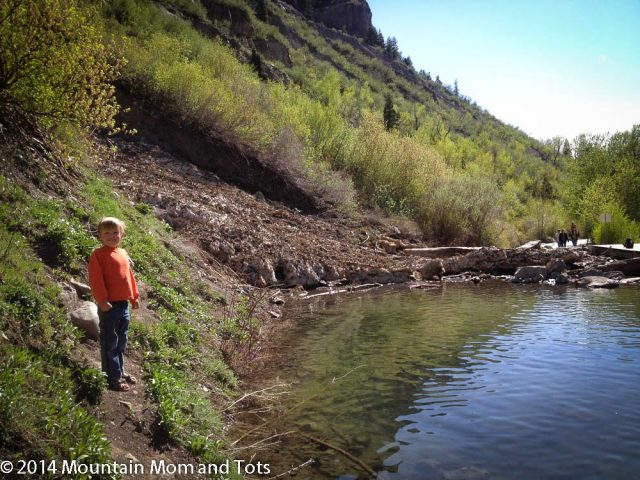Motherhood Moments: Acceptable Risk in the Outdoors

Our second article in the series from Susan Strayer who’s an inspiration to many with her Blog Mountain Mom and Tots
I recently read this fascinating article from Psychology Today on why children need risky play. In it, author Peter Grey reviews research by Ellen Sandester that says that children seek out risky play in the following six categories.
- Great Heights – perhaps this is why little g and Big E try to rock climb up the fireplace
- Rapid Speeds – sledding, snowboarding, skiing, bikes
- Dangerous Tools – Big E asks to help cut vegetables, use the drill or hammer anything, anywhere
- Dangerous Elements – Fire and deep bodies of water
- Rough and Tumble – My favorite game growing up was tickle monster, now it’s my kids’ as well
- Getting Lost/Disappearing – Hide and Seek, kids only play spaces

The article explains that kids crave play in this way to test their limits, learn how to handle fear and to feel thrill by combining the joy of freedom with a dose of danger. Risky play can help with emotional regulation of children, teaching them how to keep a level head when they feel scared or how to manage anger when rough and tumble play gets out of hand.

If free play involving some element of danger is so important to kids development, why is it so hard as a parent to let them do it? In general, I allow my tots as much freedom as I can, at times resulting in being too lenient compared to other parents.
On a recent adventure to Bridal Veil Falls in Provo Canyon, Utah I was fine with my five year old son climbing this rocky slope, while my brother and sister in law stopped their four year old daughter halfway up. They were both being safe, and nobody got hurt.

Later, Big E decided to explore the back side of the fish pond, which was only accessible via a path on a steep section of mountain that could’ve easily resulted in sliding into the water. Since the water was only a foot or two deep (although it was frigid) I was fine with E exploring there, but again my niece was not allowed to go. In that moment I felt pressure to stop Big E from his risky play, since that’s what the other adults expected, but another part of me wanted to stop the adults from being so uptight.
I understand the play it safe mentality that parents use with kids. I do it myself as well. On most outdoor adventures I find myself issuing the same well used warnings to my kids that my brother and sister in law used with theirs. Be careful! Come down from there! You’re too far ahead, I have to see you!
Saying these things helps me feel like I’m in control of my children’s behavior, even though I know I’m not. I may control their location, I may have told them my expectations, but in any given moment I cannot force them to act in a certain way. I believe this is the trust of parenthood, how much freedom can I feel comfortable giving my children? As they grow, that amount must increase as well.
After reading Risky Play: Why Children Need It and Love It I’ve decided to stop trying to control every move my children make. If they are exploring the woods I will only allow myself one “Be Careful.” If they want to throw rocks in water, I’ll join in with them. I hope being involved with their play will mitigate the dangers I see and they don’t, and hopefully we’ll all be better off for it.

Susan Strayer, author of MountainMomandTots.com is all about getting families into nature. She lives with her husband and three young kids in the mountains near Sundance, Utah and spends her time hiking, biking, skiing and camping as much as possible.
